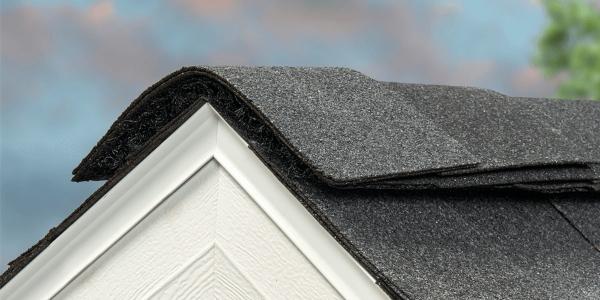Q&A – What can cause buckling shingles?

When an Idaho homeowner noticed that the asphalt shingles on their roof were forming vertical ridges, they began investigating the cause and how to fix it.
When Kevin, a homeowner from Idaho, found his new home’s roof had buckling shingles, he began investigating. Looking to get as much information as possible, Kevin asked our experts the following:
My house was built in 2022. When I moved in, I noticed that I had vertical lines on my roof where the asphalt shingles were buckling up in a straight vertical line. Roofer said no problem and he would address it next year after the weather was better. He stated that the ice and water shield used (on entire roof, not only on lower edge) was the cause of the buckling. Researching this a little, I'm wondering if it is caused from improper shingle installation. Roofer states that he will remove the shingles along the lines and piece in faulty water and ice material. This doesn't sound like a very good way to deal with this. Any comments would be appreciated. I'm hoping my roofer isn't looking to do a cheap repair that will compromise the longevity of my roof.
Our roofing expert, John Kenney of Cotney Consulting Group had this to say in response:
From your photo, I can see widespread buckling of the shingles. A few reasons can cause this.
Buckling of asphalt shingles installed over self-adhering underlayments is a common phenomenon and is most likely caused by wrinkling of the underlayment or movement of the wood deck. During the summer, when humidity is high, the wood deck absorbs moisture from exposure. As the wood moisture content increases, it can cause movement of the decking. As the roof system is installed, moisture is trapped, and the underlayment can absorb moisture and wrinkle.
Buckling can be caused if the roof sheathing is not spaced a minimum of 1/8" due to expansion and contraction.
Improper ventilation can also contribute to this problem, so it is necessary to allow moisture to escape the roofing system. Ensure the attic or ceiling space is vented properly. The minimum requirement is 1 square foot free vent area per 150 square feet of attic floor space.
To fix this problem, remove the affected shingles, and if the underlayment is wrinkled, repair the wrinkles by cutting and re-nailing the underlayment so that it is flat; then replace the shingles. From the amount of buckling I see; I believe trapped moisture is the leading cause of not being able to escape the roofing system. Once the system reaches the correct moisture content, your roof should lay flat, and the buckling problem should not return.










Comments
Leave a Reply
Have an account? Login to leave a comment!
Sign In